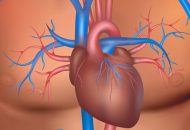Prosthesis-patient mismatch (PPM) occurs when the effective orifice area (EOA) after valve placement is significantly smaller compared with the patient’s body surface area (BSA), resulting in an increased transprosthetic residual gradient. The presence of PPM, especially in various surgical series, has been associated with long-term adverse clinical events. In relation to transcatheter aortic valve implantation…
Predictors and Evolution of Need for PPM after TAVR with Self-Expanding Valves
In the context of TAVR, one of the current challenges is the need for permanent pacemaker implantation (PPM), especially when using self-expanding valves (SEV). The information available in this regard remains controversial; while some studies suggest new PPM implantation will have no significant effect on clinical evolution, others have associated them with worse prognosis. As…
Degenerative Mitral Regurgitation: Impact on Post-Procedural Gradient
Primary or degenerative mitral regurgitation (MR) occurs frequently. Even though surgery continues to be the standard treatment at present, it remains risky for one group of patients, which makes edge-to-edge mitral valve repair (MV-TEER) a viable alternative. We are well aware that moderate to severe MR is associated with worse prognosis. However, post procedural mean…
MyVal Device in Non-Calcified Severe Aortic Regurgitation
Due to the proven long-term results and substantial increase in the number of transcatheter aortic valve implantation (TAVI) procedures conducted, the application of TAVI has been extended to clinical situations outside the original scope, such as non-calcified aortic regurgitation (NCAR). Device placement in these new scenarios entails a technical challenge due to the absence of…
Predictors and Evolution of Permanent Pacemaker After TAVR with Self-Expanding Valves
Transcatheter aortic valve replacement (TAVR) has shown remarkable benefits and continues to advance towards lower-risk patients and younger ages. However, one of its limitations lies in the demand for a permanent pacemaker (PPM), which during TAVR early stages with self-expanding valves reached 30%. Uncertainty persists regarding the evolution of patients undergoing PPM implantation after TAVR,…
SOLACI-SBHCI 2023 | TAVI – Minimizing Risks, Optimizing Outcomes & Impact of the Index Procedure on Future Options – Dr. Ole De Backer
Read the most outstanding articles from SOLACI-SBHCI 2023 Congress. In this case, check the presentation by Dr. Ole De Backer, entitled “TAVI – Minimizing Risks, Optimizing Outcomes & Impact of the Index Procedure on Future Options”
SOLACI-SBHCI 2023 | TAVR – Lifetime Management of Patients with Aortic Stenosis – Dr. Ole de Backer
Read the most outstanding articles from SOLACI-SBHCI 2023 Congress. In this case, check the presentation by Dr. Ole de Backer, entitled “TAVR – Lifetime Management of Patients with Aortic Stenosis”
Moderate Aortic Stenosis: We Should Start Assessing It More Thoroughly
Moderate aortic stenosis (MAS) encompasses a broader spectrum than severe aortic stenosis. However, its progression has not yet been fully elucidated. While there are reports suggesting that this condition is not as benign as initially believed, there is a need to consider early interventions in certain instances. Researchers conducted an analysis from January 2016 to…
bRight: Impact and Safety of the TriClip Device in a Real-World Cohort
The clinical importance of severe tricuspid regurgitation (TR) has been underestimated for many years now. However, studies and registries have shown that, when left untreated, this pathology significantly increases morbidity and mortality. Patients in need of treatment are often older individuals with higher surgical risk due to the prevalence of this condition. Contemporary data has…
SCOPE I Results at 3 Years: ACURATE Neo vs. SAPIEN 3
Transcatheter aortic valve implantation (TAVI) has become the standard treatment for elderly patients with severe symptomatic aortic stenosis. While this has led to the development of new devices with different features, evidence from randomized studies on these new scaffolds is limited. The randomized SCOPE I study (Safety and Efficacy of the Symetis ACURATE Neo/TF Compared…
Mitral Valve Edge to Edge Repair for Papillary Muscle Rupture after Acute Myocardial Infarction
With an approximate incidence of 0.05% to 0.25%, post-acute myocardial infarction (AMI) mitral valve failure caused by papillary muscle rupture is not exactly common. However, it is associated to high mortality rate, ranging between 36% and 80%. Current guidelines recommend surgical treatment, but more often than not surgery involves prohibitive or extremely high risk, with…








